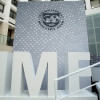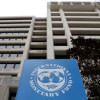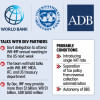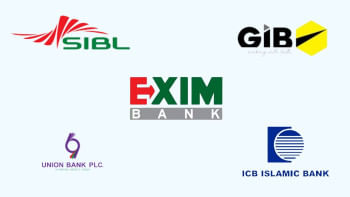Foreign loan pledges jump 33 times; still below IMF ceiling

Bangladesh's fresh foreign loan commitments soared by more than 33 times in the first quarter of the current fiscal year (FY), although the amount still remains well below the borrowing ceiling recently set by the International Monetary Fund (IMF).
Between July and September of FY2025-26, the government secured commitments worth $911 million, compared to just $27 million during the same period a year earlier, according to data from the Economic Relations Division (ERD).
Of the total, about $482 million came from the Asian Development Bank (ADB) and $12.4 million from the World Bank, while the rest was committed by various bilateral development partners.
The IMF introduced, for the first time, a ceiling on Bangladesh's foreign borrowing during the third and fourth reviews of its $5.5 billion loan package in June this year. The new condition aims to contain risks stemming from the country's rising external debt.
Under the terms, Bangladesh can borrow a maximum of $8.44 billion in fresh external loans during FY2026, with a quarterly cap of $1.91 billion for the first quarter. The IMF said it will closely monitor the government's foreign borrowing on a quarterly basis.
An IMF mission is currently in Dhaka to conduct the fifth review of the programme, which will examine both domestic and external debt levels.
No such limit was in place when the IMF originally approved a $4.7 billion programme in early 2023. The fourth and fifth tranches, approved in June 2025, added about $800 million to the total package and extended the programme by six months. So far, Bangladesh has received $3.6 billion under the loan package.
A senior finance ministry official, speaking on condition of anonymity, said the borrowing ceiling is based on the IMF's latest Debt Sustainability Analysis (DSA), which has classified Bangladesh as a moderate-risk country for two consecutive years — FY2023 and FY2024.
The downgrade from low risk followed growing repayment pressures amid weaker export earnings and sluggish revenue growth.
According to the DSA, Bangladesh's debt-to-export ratio jumped to 162.7 percent in FY2024, far higher than the IMF's earlier projection of around 116-118 percent. The debt service-to-revenue ratio has also climbed, narrowing fiscal space for new borrowing.
The IMF noted that these ratios exceeded its stress-test thresholds largely due to the downward revision of export figures.
"Although Bangladesh's total external debt remains below all IMF thresholds, the risks have increased in certain areas, prompting this precautionary measure," the finance ministry official said.
Government data show that external debt rose from $20.3 billion in FY2010 to $68.8 billion in FY2024, reaching $80.19 billion by June 2025.
Debt servicing has surged accordingly, from $876 million in FY2010 to about $4 billion in the last fiscal year. In the first quarter of the current FY2026, debt servicing climbed 14 percent year-on-year to $1.28 billion, including $817 million in principal payments and the rest as interest.
Meanwhile, foreign aid disbursements increased 36 percent year-on-year to $1.15 billion in the first quarter, driven largely by a stable political environment.
The World Bank topped the list with $323 million in project disbursements, followed by Russia's $315 million for the Rooppur Nuclear Power Plant, ADB's $188 million, India's $63 million, and Japan's $41 million. No Chinese funds were disbursed during the period.


 For all latest news, follow The Daily Star's Google News channel.
For all latest news, follow The Daily Star's Google News channel. 










Comments